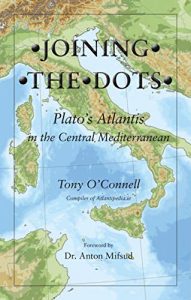Kauri trees
Dendrochronology
Dendrochronology is the science of dating the age of timber by comparing the sequence of its tree- ring width variations with that of timbers of a known date, ideally belonging to the same species and from the same location. As with any science, it is not without its difficulties(c), but is generally considered to be more accurate than radiocarbon dating, which is frequently calibrated using dendrochronology. Fully anchored chronologies now exist for river oaks in parts of Germany dating back over 10,000 years and a similar chronology extending back 6500 years exists for the bristlecone pine of California’s White Mountains. A new project(b) involving the Kauri trees of New Zealand has commenced, which should give an accurate climate record for the past 30,000 years. Some of these trees are dated to 130,000 years ago.
ring width variations with that of timbers of a known date, ideally belonging to the same species and from the same location. As with any science, it is not without its difficulties(c), but is generally considered to be more accurate than radiocarbon dating, which is frequently calibrated using dendrochronology. Fully anchored chronologies now exist for river oaks in parts of Germany dating back over 10,000 years and a similar chronology extending back 6500 years exists for the bristlecone pine of California’s White Mountains. A new project(b) involving the Kauri trees of New Zealand has commenced, which should give an accurate climate record for the past 30,000 years. Some of these trees are dated to 130,000 years ago.
Professor Mike Baillie, one of the leading dendrochronologists in Europe, has written[111] about ‘dendro’ evidence of cometary impacts. One such impact has been suggested by a number of commentators, as the possible cause of the demise of Atlantis.
While the science of dendrochronology is perfectly sound there can be a need for fine-tuning to take account of unexpected factors like the nibbling of tree trunks by animals such as sheep. Recent studies in Norway(d) over a nine-year period provided data enabling appropriate calibration to be achieved.
In 2014, Gunnar Heinsohn, a German chronology revisionist, questioned the value of dendrochronology, which was followed by a rebuttal from Mike Baillie(e). This debate continues, with many specific details far from resolved (f).
Professor Henri D. Grissino-Mayer, of the University of Tennessee, has a most informative website(a) on dendrochronology, which along with a 2020 paper from Nate Loper brings the subject more up-to-date(g).
An International Conference on Dendrochronology and Climate was held in Amsterdam in February 2022 that was aimed at bringing together leading academic scientists, researchers and research scholars to exchange and share their experiences and research results on all aspects of Dendrochronology and Climate. It also provided a premier platform for researchers, practitioners and educators to present and discuss the most recent innovations, trends, and concerns, as well as practical challenges, encountered and solutions adopted in the fields of Dendrochronology and Climate.
>A report in The International Journal of Wood Culture, published in January 2023(i) detailed an unusual application of dendrochronology, involving the study of what are known as ‘mummy labels’ that are made of wood which were attached to Egyptian mummies during the Graeco-Roman period. It appears that there are thousands at various locations worldwide that offer invaluable climate information from tree-rings visible on the labels<
dendrochronology, involving the study of what are known as ‘mummy labels’ that are made of wood which were attached to Egyptian mummies during the Graeco-Roman period. It appears that there are thousands at various locations worldwide that offer invaluable climate information from tree-rings visible on the labels<
For the sake of balance, I have included a link to a creationist website debunking dendrochronology.(h)
(a) https://web.archive.org/web/20180810120352/http:/web.utk.edu:80/~grissino/
(b) https://www.sciencedaily.com/releases/2010/04/100405103837.htm
(c) See Archive 3046
(d) https://wattsupwiththat.com/2011/07/26/tree-ring-widths-more-affected-by-sheep-than-temperature/
(e) https://www.q-mag.org/the-1st-millennium-ad-chronology-controversy.html
(f) Deranged Dating: The Roman Problem | MalagaBay (archive.org)
(h) How Dendrochronology disproves the flood [Debunked] : Creation (reddit.com)
